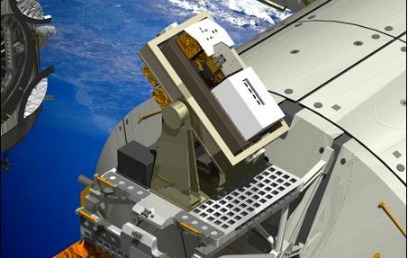Can’t You Just Move the Space Station?
When a science team asked to move the ISS for one of their experiments, they had to get five nations to agree on the engineering, timing, and risks.
As the saying goes, it’s tough to turn a big ship. That’s why an experiment last winter that required shifting the International Space Station’s attitude became an important lesson in what it takes to move a million-pound structure in space. According to European Space Agency operations engineers Nadia This and Denis Van Hoof, an undertaking like this requires patience and preparation — not to mention a few gutsy scientists.
The move was to accommodate an ESA experiment called SOLAR, a nickname for the “Sun Monitoring on the External Payload Facility of Columbus” project, which measures sun activity and radiation. Mounted to the outside of the station, SOLAR normally can rotate to keep the sun in view for 14 days in a row — called a Sun Visibility Window. But eventually the station’s orientation changes so that it blocks the sun, sometimes for up to 25 days.
During a meeting of the SOLAR team in 2010, one of the heliophysicists mentioned it was a pity the instrument couldn’t see a full 27-day rotation of the sun, especially now that it’s in the active phase of its 11-year cycle. Couldn’t they move the space station to point the instrument at it for that long?
At least they could ask.
“For scientific investigators, the sky is the limit,” says Van Hoof. “They will propose whatever crazy idea they might have. Of course there is a filter in between. Two years ago, I talked with my team leader about this, and he said ‘let’s make a technical , but I’m pretty sure this is not going to get through.’ ”
Fortunately, celestial timing favors SOLAR twice a year. Around the summer and winter solstices, when the sun reaches its highest or lowest point relative to the celestial equator, the blackout period shortens to just eight days. So if the team could move the station for just those days, they could combine two observation windows back-to-back, and see a full rotation of the sun.
Adjustments to the ISS orbit are carefully planned and executed in collaboration with the five international partners and their scientific communities. Because many sensitive instruments are mounted outside and inside, changing the station’s orientation might mean exposing them to different radiation, temperature fluctuations, drag and other hazards, not to mention changing their own planned targeting. The station can fly in three flight attitudes, but some instruments are only rated to fly a limited number of hours in certain configurations.
Station managers also needed to consider everything from the position of the station’s robotic arm to the amount of momentum stored in the station’s control gyros (read more about ISS steering here)
After two years of planning and negotiations, the move was approved. “I don’t know if we got lucky or if it’s politics now, but the ISS program is really wanting to show that they are there for science,” Van Hoof says.
Last fall, with all the parameters set and the SOLAR experiment ready, the station prepared to move. On November 19, SOLAR came out of shadow and began recording the sun. On December 1, the station spent about two hours shifting seven degrees, holding the angle for 10 days before returning to its regular position. The team was able to gather 35 straight days of observations.
The science team is still analyzing their data, but they noticed changes in the sun’s activity in extreme ultraviolet wavelengths, related to newly forming sunspots, Van Hoof says. A full rotation provides a much more complete data set that the team can use to compare with other solar-observing experiments, such as NASA’s Solar Dynamics Observatory. The team was so pleased with the results that they hope to perform the maneuver again during the summer solstice later this month.
